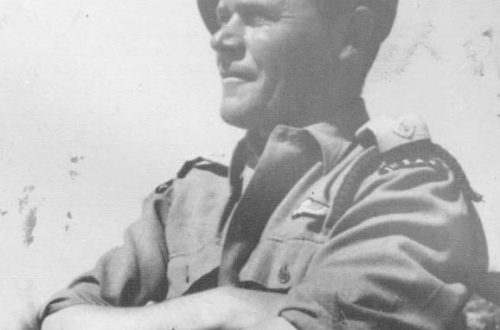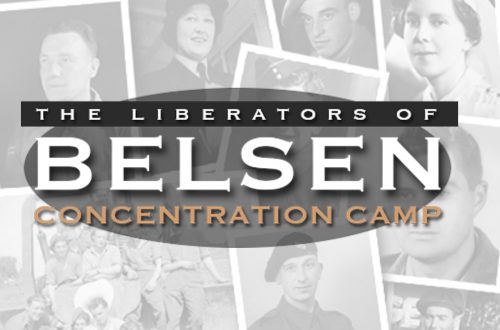
SAS Enter Bergen Belsen
March 1945, two SAS squadrons numbering about 300 men in all crossed the Rhine at the tip of an Allied army invading Germany itself.
For three-and-a-half years, the regiment had fought Germans, Italians, French and Russians, against uniformed troops, collaborators, spies and irregulars.
But as World War II entered its final bloody chapter, it found itself fighting against people staunchly and desperately defending their own land. It would be no picnic.
They were mounted in 75 Jeeps, each carrying twin Vickers machine-guns and 12 drums of ammunition, with a bazooka and Bren gun in the rear. Every third Jeep was armed with a .50-calibre Browning plus a mounted searchlight.
This extensive armoury was essential as they came up against an enemy fighting for every inch of home — from the fanatical SS implicated in the crimes of Nazism to old men of the home guard and even children.
Some of the poor little blighters were only 13 or 14 years old,’ one trooper recalled. ‘They were crawling out of holes everywhere. The Germans put schoolboys in uniform and forced them to fight, when their chances of survival were minimal. It was inhumane.’
The reactions of civilians to this army of occupation varied widely: some were cowed, most were petrified, some rushed to surrender and some remained defiant.
One moment the SAS troops would be sharing their rations with half-starved German women and children; the next, a teenage boy would emerge from behind a wall and take aim with an anti-tank warhead, an act of self-destructive bravery so naive only an adolescent could be persuaded to do it.
Often these child-soldiers had no other weapons. The SAS had not signed up to kill teenagers. For many, this last ghastly episode of the war was the worst.
They were at risk, too, from Hitler’s order to kill Commandos on sight. As a defence, they wore ordinary black berets and all references to the SAS were excised from their pay books. They were fighting under cover, camouflaged as ordinary soldiers.
The disguise was apt since by then they were a far cry from the hit-and-run teams operating behind far behind enemy lines in North Africa that their founder David Stirling had envisaged.
Instead, as they made their way though Europe, their principal job was as forward reconnaissance and assault troops, weeding out resistance, drawing enemy fire, clearing the roads and keeping the main Allied force of tanks and ground troops rolling forward.
It was in this capacity that, on April 15, 1945, Lieutenant John Randall and his driver were motoring through forests of pine and silver birch in northern Germany when a terrible smell hit them, a cloying stench of rot and excrement that seemed to hang in the air like a plague miasma.
The reek of pure evil, it grew stronger as they advanced.
They came to a pair of impressive iron gates, standing open at the entrance to a sandy track. They drove in and, after half a mile, reached a barbed-wire fence.
A handful of SS guards stood idly by and stared listlessly at them. Machine-gunners in watchtowers looked down but made no move. Randall was struck by the neatly tended flower beds on either side of the gate, and the gleaming whitewashed kerbstones.
One hundred yards further on, they were in hell itself.
In a clearing, beside rows of huts, shuffled an aimless army of ghosts: withered semi-skeletons with sunken eyes and parchment skin, some clad in black-and-white striped prison garb, but many almost naked.
The prisoners converged on the Jeep, plucking at the men’s uniforms, pleading for food, help, protection. ‘There were hundreds of them and an over-powering stench,’ said Randall.
A little further on was what Randall initially took to be a potato patch, which some of the starving, half-naked figures seemed to be picking over, as if in search of sustenance. On drawing closer, he saw it was a pile of dead bodies. The living were pulling off the ragged garments of the dead to clothe themselves.
***
Some 50 yards beyond was a spectacle that made Randall retch: a vast pit, 50ft square, containing a contorted mass of bodies, a charnel pit filled to overflowing with the dead, and the main source of the appalling smell.
He and his driver were the first Allied soldiers to enter Bergen-Belsen concentration camp. Some 60,000 prisoners were still packed into an area designed to accommodate 10,000.
A few minutes later Randall was joined by others from the troop. ‘We stood aghast,’ one recalled. ‘We simply could not comprehend that human beings could treat their fellow men in such a brutal and heinous way.’
The remaining prison guards, either oblivious to the arrival of Allied soldiers or unconcerned by it, were carrying on the business of murder as usual. A woman prisoner thrust her hand under the barbed wire to grab a rotten turnip, and a guard casually shot her dead.
At that moment there appeared a smiling figure in SS uniform who introduced himself as Josef Kramer, the commandant. He offered the visitors a tour of the camp, declaring absurdly that he was not responsible for the condition of the inmates.
Ushered into the nearest hut, a horrified Randall recalled: ‘Emaciated figures peered out at us, in fear and surprise, from the rows of bunks. Lying among them, on the same bunks, were dead bodies.’
The SAS men’s instinct was to obliterate every one of the guards in a burst of gunfire, but somehow they managed to control their fury. They locked the commandant in the guardroom and set about distributing whatever rations they had to the prisoners.
An officer explained to the inmates that they were now free, but few could take it in. ‘Their faces were dull, exhausted, emotionless, not capable of expressing joy and excitement. Their minds would be distorted for years to come — perhaps for ever.’
The SAS soldiers who stumbled on the camp recalled that day as the worst in their lives. Randall could not get the smell of death out of his hair or the lingering stench from his clothing. He could never expunge it from his memory. ‘The smells and sights of these dead bodies haunted me.’
AND SO, in unimaginable horror, the SAS’s part in World War II came to an end. A few days later the SAS’s founder, Colonel David Stirling — captured in the desert in 1943 — was freed from Colditz, where he’d been a PoW.
In August the U.S. dropped atomic bombs on Hiroshima and Nagasaki and Japan surrendered. Britain began dismantling its vast war machine with bleak bureaucratic efficiency. Shortly after, a crisp, unemotional memo from the War Office decreed: ‘It has been decided to disband the Special Air Service regiment.’
Daily Mail
11,124 total views


